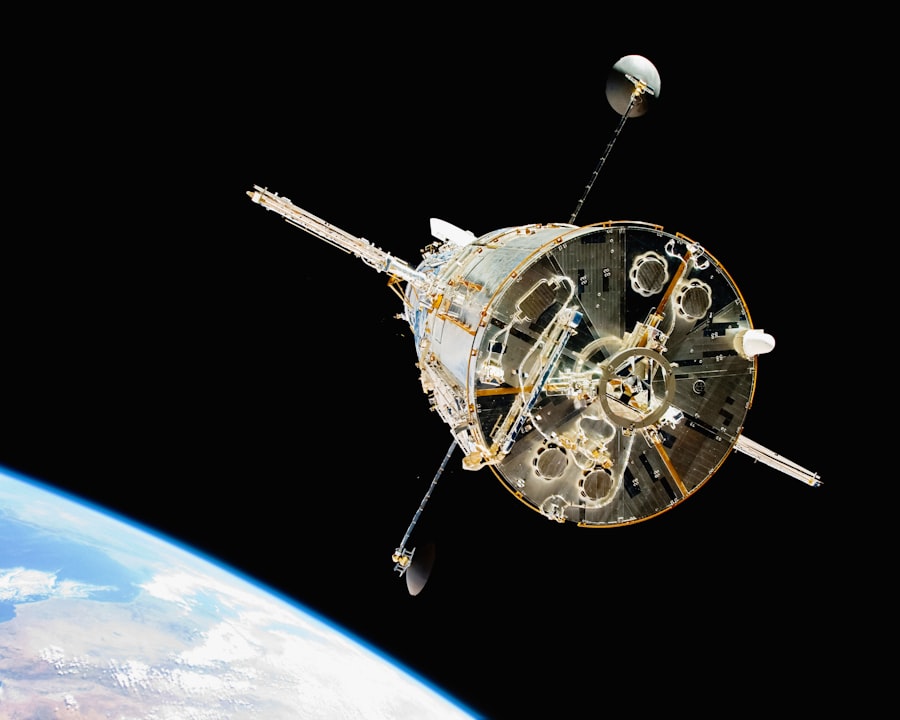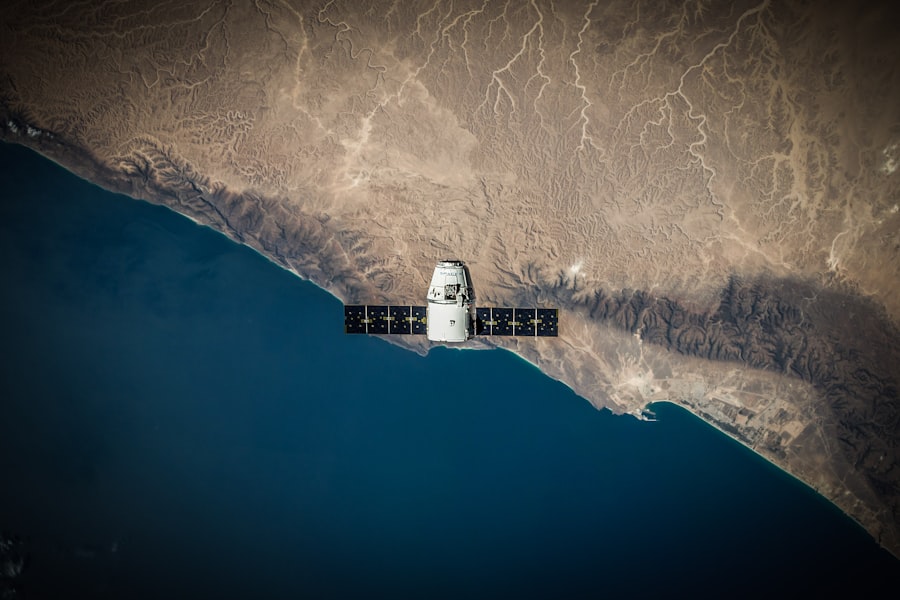The World Space Station (WSS) stands as a monumental achievement in human ingenuity and international cooperation, orbiting Earth at an altitude of approximately 400 kilometers. This remarkable structure serves as a microgravity laboratory, a platform for scientific research, and a symbol of what humanity can achieve when nations collaborate. The WSS is not merely a technological marvel; it represents the culmination of decades of advancements in aerospace engineering, life sciences, and international diplomacy.
As astronauts float within its walls, conducting experiments that would be impossible on Earth, they are not just exploring the cosmos; they are also pushing the boundaries of human knowledge and capability. The significance of the WSS extends beyond its physical presence in low Earth orbit. It acts as a bridge between nations, fostering collaboration among space agencies such as NASA, Roscosmos, ESA, JAXA, and CSThis partnership has enabled the sharing of resources, expertise, and scientific data, creating a unique environment where diverse cultures and ideas converge.
The WSS is a testament to the potential of human cooperation in addressing some of the most pressing challenges facing our planet, from climate change to health crises. As we delve deeper into the history, operations, and future of the WSS, it becomes clear that this extraordinary facility is not just a scientific outpost but a beacon of hope for global unity in the pursuit of knowledge.
Key Takeaways
- The World Space Station is a collaborative project involving multiple countries to conduct scientific research and experiments in space.
- The World Space Station has a rich history of development, with modules and components being added over time to expand its capabilities.
- Living and working on the World Space Station presents unique challenges such as microgravity and isolation, but also offers opportunities for scientific discovery and international cooperation.
- Scientific research and experiments on the World Space Station cover a wide range of fields, including biology, physics, and astronomy, providing valuable insights into the universe.
- International collaboration on the World Space Station has been crucial in advancing space exploration and fostering diplomatic relations between participating countries.
History and Development of the World Space Station
The journey toward the establishment of the World Space Station began in the early 1980s when various space agencies recognized the need for a permanent human presence in space. The concept evolved from earlier projects like NASA’s Freedom program and Russia’s Mir-2. In 1998, the first module of the WSS, Zarya, was launched into orbit, marking the beginning of an ambitious international project that would take shape over the next two decades.
The assembly of the station involved multiple missions and contributions from various countries, showcasing a remarkable level of collaboration in space exploration. As construction progressed, additional modules were added to the WSS, each serving specific functions such as living quarters, laboratories, and docking ports for visiting spacecraft. The Unity module was launched shortly after Zarya, followed by modules like Destiny, Columbus, and Kibo.
Each addition brought new capabilities and expanded the station’s potential for scientific research. The development of the WSS was not without its challenges; technical difficulties, budget constraints, and geopolitical tensions often threatened to derail progress. However, through perseverance and commitment from all participating nations, the WSS became a reality, symbolizing a new era in human space exploration.
Living and Working on the World Space Station

Life aboard the World Space Station is a unique experience that combines rigorous scientific work with the challenges of living in microgravity. Astronauts typically spend six months at a time on the station, during which they must adapt to a completely different environment. The absence of gravity affects everything from how they eat and sleep to how they conduct experiments.
For instance, meals are carefully packaged to prevent crumbs from floating away and causing damage to sensitive equipment. Astronauts use special utensils designed for use in microgravity, and they often consume rehydratable foods that can be easily prepared with hot water. In addition to adapting to their new living conditions, astronauts on the WSS must maintain a strict schedule that balances work and leisure.
A typical day includes conducting experiments, performing maintenance tasks, and participating in educational outreach activities with students on Earth. The station is equipped with exercise equipment to help astronauts counteract the muscle atrophy and bone density loss that can occur in microgravity. This regimen is crucial for maintaining their health during long-duration missions.
Furthermore, astronauts have access to communication systems that allow them to connect with family and friends back home, providing a vital link to their lives on Earth.
Scientific Research and Experiments on the World Space Station
| Year | Number of Experiments Conducted | Research Areas | Findings |
|---|---|---|---|
| 2015 | over 300 | Biological Sciences, Physical Sciences, Earth and Space Sciences | Microgravity effects on human cells |
| 2016 | around 400 | Materials Science, Life Sciences, Technology Development | 3D printing of human tissue |
| 2017 | over 500 | Astrophysics, Microgravity Research, Environmental Science | Study of cosmic rays |
The World Space Station serves as an unparalleled platform for scientific research across various disciplines, including biology, physics, astronomy, and materials science. The unique microgravity environment allows scientists to conduct experiments that would be impossible or significantly different on Earth. For example, researchers have studied protein crystallization in microgravity to better understand diseases such as cancer and Alzheimer’s.
The results from these experiments can lead to advancements in drug development and treatment options. In addition to biological research, the WSS has been instrumental in advancing our understanding of fundamental physics. Experiments involving fluid dynamics have revealed new insights into how fluids behave without gravity, which can have implications for various industries on Earth.
Moreover, studies on combustion in microgravity have provided valuable data that could improve fire safety protocols both in space and on our planet. The station also serves as a testing ground for technologies that will be essential for future deep-space missions, such as life support systems and radiation shielding.
International Collaboration on the World Space Station
The collaborative nature of the World Space Station is one of its most defining features. It brings together space agencies from around the globe to work toward common goals in scientific research and exploration. NASA (United States), Roscosmos (Russia), ESA (European Space Agency), JAXA (Japan), and CSA (Canada) are key partners in this endeavor.
Each agency contributes unique expertise and resources, creating a rich tapestry of knowledge that enhances the overall mission of the WSS. This international collaboration extends beyond mere logistics; it fosters cultural exchange and mutual understanding among astronauts from different countries. Crew members often participate in joint training exercises and share their experiences during missions.
This camaraderie helps break down barriers and promotes peaceful relations among nations. Furthermore, educational outreach initiatives associated with the WSS encourage students worldwide to engage with science and technology, inspiring future generations to pursue careers in STEM fields.
Challenges and Risks of Space Exploration on the World Space Station

Despite its many successes, living and working on the World Space Station comes with inherent challenges and risks that must be carefully managed. One significant concern is the health effects of long-duration spaceflight on astronauts. Prolonged exposure to microgravity can lead to muscle atrophy, bone density loss, and changes in vision due to fluid shifts within the body.
To mitigate these risks, astronauts follow rigorous exercise regimens and undergo regular medical evaluations while aboard the station. Another challenge is the potential for equipment failure or damage due to micrometeoroids or space debris. The WSS is equipped with shielding designed to protect against small particles traveling at high velocities; however, larger debris poses a more significant threat.
In some cases, crew members must perform “debris avoidance maneuvers” to change the station’s orbit temporarily if a piece of debris is projected to come too close. Additionally, emergency protocols are in place to ensure crew safety in case of unforeseen events such as cabin depressurization or fire.
Future of the World Space Station and Beyond
As we look toward the future of space exploration, discussions about the World Space Station’s longevity are becoming increasingly relevant. While it has served as an invaluable platform for research since its inception, plans are underway to transition from low Earth orbit operations to deeper space exploration missions. NASA has announced intentions to retire the WSS by 2030, paving the way for new initiatives such as lunar bases under the Artemis program and potential missions to Mars.
The future may also see private companies taking an active role in low Earth orbit activities. With advancements in commercial spaceflight technology, private entities are beginning to explore opportunities for research and tourism aboard their own space stations. This shift could lead to a new era of innovation in space exploration while allowing government agencies to focus on more ambitious goals beyond Earth’s orbit.
The Importance of the World Space Station in Understanding the Universe
The World Space Station has played an essential role in advancing our understanding of both our planet and the universe beyond it. Through international collaboration and groundbreaking scientific research, it has become a symbol of what humanity can achieve when we work together toward common goals. As we prepare for future explorations beyond low Earth orbit, the lessons learned from operating the WSS will undoubtedly inform our approach to new challenges.
The importance of the WSS extends far beyond its physical structure; it embodies humanity’s quest for knowledge and our desire to explore the unknown. As we continue to push boundaries in space exploration, we must remember that our greatest achievements often arise from collaboration across borders—a lesson that resonates deeply within the context of our shared journey aboard this remarkable station.


